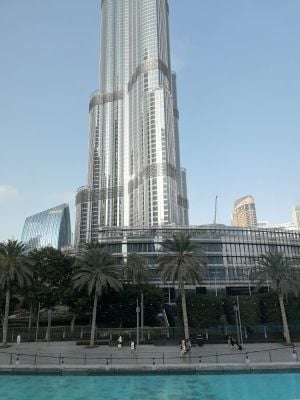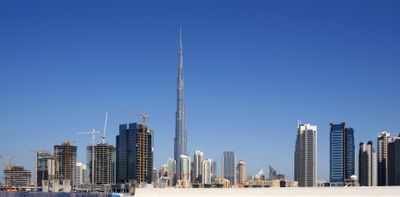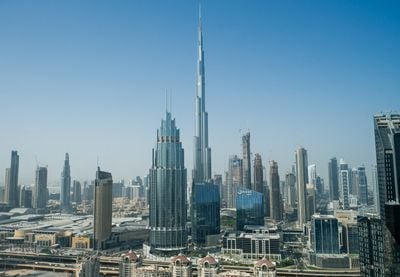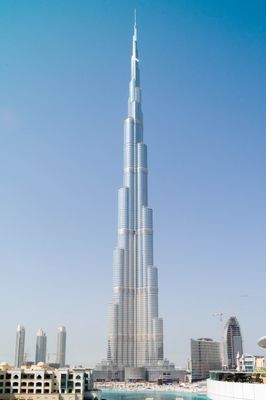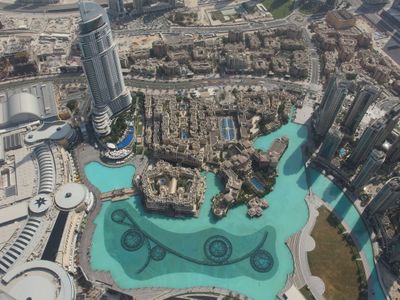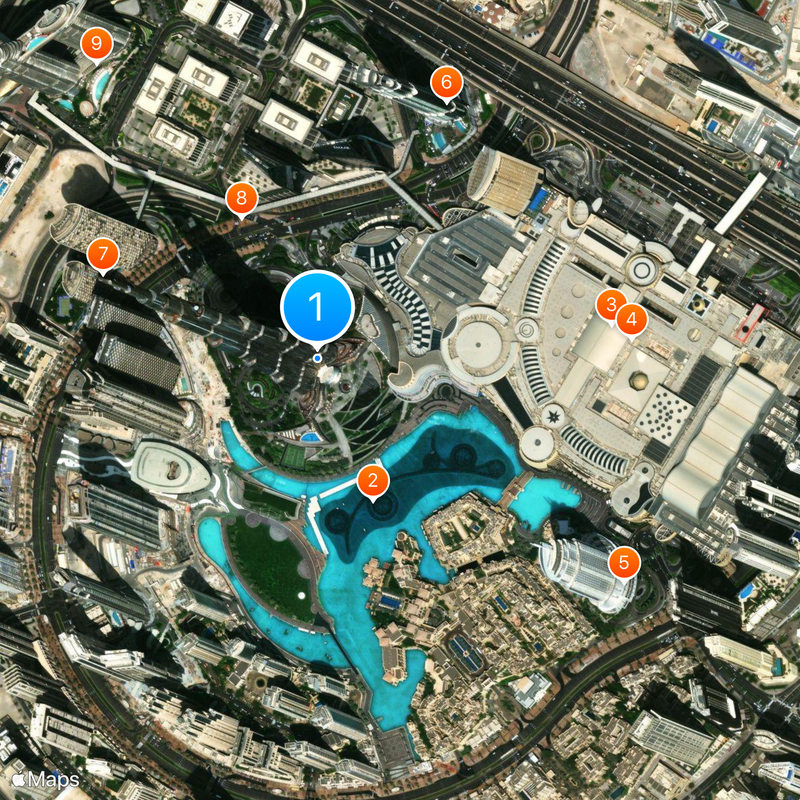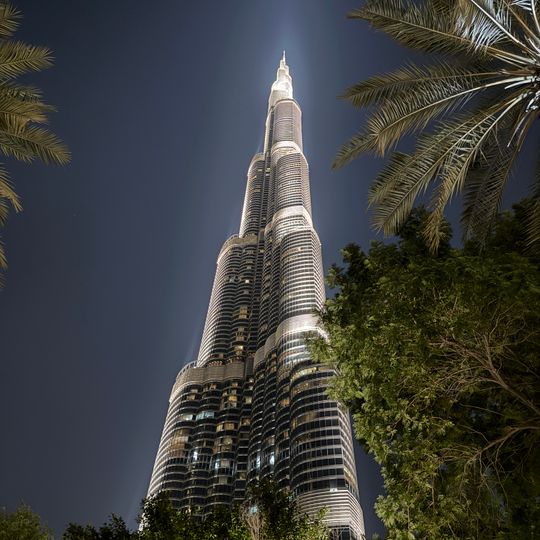
Burj Khalifa, Modern skyscraper in Downtown Dubai, United Arab Emirates.
Burj Khalifa is a 2,717-foot (828-meter) tower in Downtown Dubai, United Arab Emirates, with three wings that spiral upward from a central core and narrow as they climb. Floor-to-ceiling glass panels cover the exterior, held by aluminum and stainless steel frames built to withstand temperatures above 122 degrees Fahrenheit (50 degrees Celsius) and desert sandstorms.
Architect Adrian Smith began early designs in 2003, and excavation started the following year after favorable economic forecasts. The 2008 financial crisis threatened the project, prompting Abu Dhabi to provide emergency funding that kept construction moving.
Offices, residences, and the Armani Hotel share a complex where thousands live and work each day. Visitors from across the region gather around the base to take photographs and stroll through the surrounding shopping corridors.
The Red Line metro reaches Dubai Mall station, connected by pedestrian bridge to the entrance. Avoid midday visits in summer when outdoor temperatures regularly exceed 113 degrees Fahrenheit (45 degrees Celsius) and make later exploration uncomfortable.
A condensation collection system harvests moisture from air conditioning units throughout the building, recovering around 4 million gallons (15 million liters) each year. This recycled water supplies irrigation for landscaping around the base and reduces reliance on desalinated municipal sources.
Location: Dubai
Inception: 2010
Architects: Adrian Smith, Marshall Strabala, George J. Efstathiou, William F. Baker, Skidmore, Owings & Merrill
Official opening: January 4, 2010
Architectural style: high-tech architecture, neo-futurism
Floors above the ground: 163
Floors below the ground: 1
Elevators: 58
Height: 584.5 m
Accessibility: Rollstuhl eingeschränkter Zugang
Made from material: reinforced concrete, steel, aluminium, glass
Operator: Emaar Properties
Address: 1 Sheikh Mohammed bin Rashid Boulevard
Email: Info@atthetop.ae
Website: http://burjkhalifa.ae
GPS coordinates: 25.19722,55.27417
Latest update: December 14, 2025 17:12

Photo license: CC0

Photo license: GFDL

20th and 21st-century architecture has transformed city centers with structures that push engineering boundaries. Observation towers like the Seattle Space Needle and experimental residential complexes like Habitat 67 in Montreal demonstrate the evolution of construction techniques. Architects have...

The world of skyscrapers reflects the technical and architectural developments of recent decades. From New York to Dubai and Shanghai, buildings have risen that now define their cities' skylines while combining different construction traditions and innovations. This collection includes towers across...
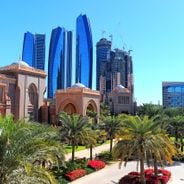
The United Arab Emirates feature an architectural landscape where modern structures coexist with historical remnants. In Dubai, the Burj Khalifa rises to 828 meters and is the tallest skyscraper in the world, while the artificial island of Palm Jumeirah demonstrates the country’s coastal engineering...
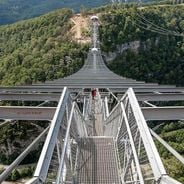
This collection brings together some of the most technically ambitious structures ever built, from record-breaking skyscrapers and suspension bridges to high-speed roller coasters that push the boundaries of what steel and concrete can achieve. These sites span continents and represent decades of...

This collection brings together high rises and structures from different continents that redefine conventional building standards through their exceptional architecture. From the spiral rotation of Turning Torso in Malmö to the distinctive form of the CCTV Headquarters in Beijing, these buildings...
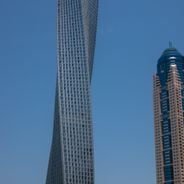
Contemporary skyscrapers push the boundaries of vertical architecture with structures that challenge gravity through rotations, twists, and spirals. These buildings reflect advances in structural engineering and allow for residential, commercial, and cultural structures with facades that sometimes...
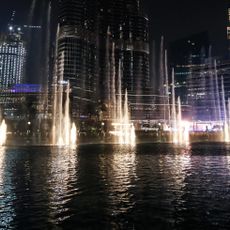
The Dubai Fountain
244 m
Dubai Aquarium & Underwater Zoo
474 m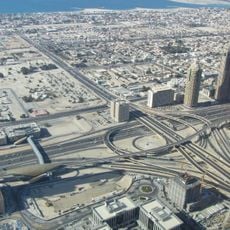
At the Top Burj Khalifa
505 m
Address Downtown
608 m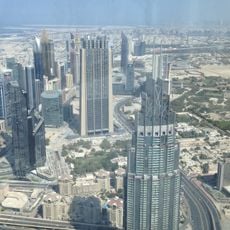
Address Boulevard
460 m
The Grand Boulevard Tower
369 m
Arabic Couple Statue together
256 m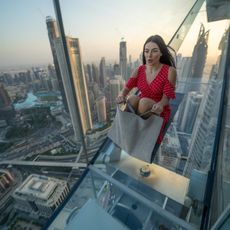
Sky Views Dubai
590 m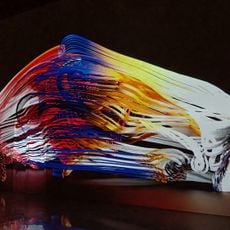
Arte Museum Dubai
620 m
KidZania
635 m
Infinity des Lumières
620 m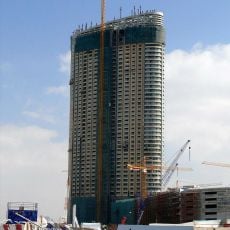
The Address Dubai Mall
431 m
Il Primo Tower
237 m
FtNFT
531 m
Work of art, sculpture
222 m
The Waterfall
575 m
Dubai Steel Heart
484 m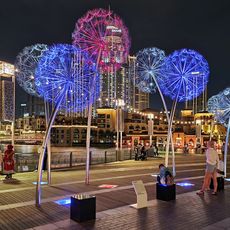
Dandelion Light sculpture
303 m
Horse
526 m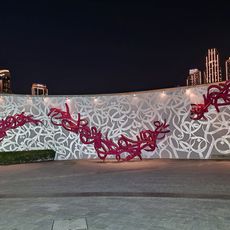
Work of art, sculpture
235 m
Diplodocus
530 m
Work of art
256 m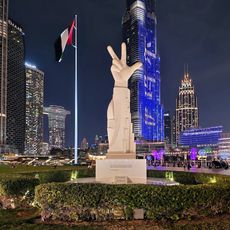
The Emirati Three-Finger Salute Statue
378 m
Fountain Watching Hill
236 m
Souk Al Bahar Bridge
375 m
Scenic viewpoint
326 m
Scenic viewpoint
606 m
The Dubai Mall
445 mReal people, real opinions — but not verified.
Visited this place? Tap the stars to rate it and share your experience / photos with the community! Try now! You can cancel it anytime.


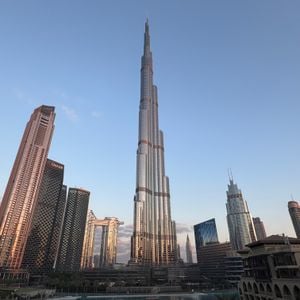
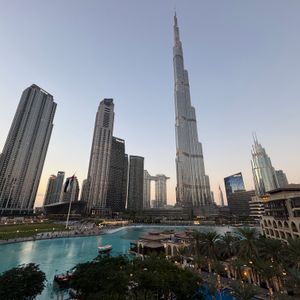
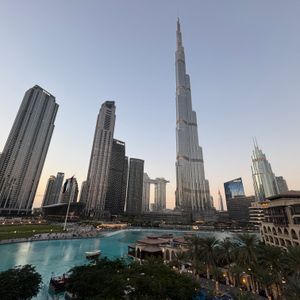
Discover hidden gems everywhere you go!
From secret cafés to breathtaking viewpoints, skip the crowded tourist spots and find places that match your style. Our app makes it easy with voice search, smart filtering, route optimization, and insider tips from travelers worldwide. Download now for the complete mobile experience.

A unique approach to discovering new places❞
— Le Figaro
All the places worth exploring❞
— France Info
A tailor-made excursion in just a few clicks❞
— 20 Minutes

